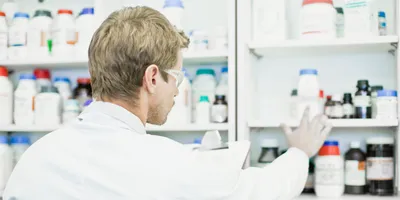 A team of scientists led by University of Florida Institute of Food and Agricultural Sciences researchers has found a faster and more precise way to detect salmonella in beef and chicken, a finding that could help prevent major illnesses.Photo Credit: Tyler Jones, UF/IFAS photographyGAINESVILLE, Fla. — A team of scientists led by University of Florida Institute of Food and Agricultural Sciences researchers has found a faster and more precise way to detect salmonella in beef and chicken, a finding that could help prevent major illnesses.
A team of scientists led by University of Florida Institute of Food and Agricultural Sciences researchers has found a faster and more precise way to detect salmonella in beef and chicken, a finding that could help prevent major illnesses.Photo Credit: Tyler Jones, UF/IFAS photographyGAINESVILLE, Fla. — A team of scientists led by University of Florida Institute of Food and Agricultural Sciences researchers has found a faster and more precise way to detect salmonella in beef and chicken, a finding that could help prevent major illnesses.
Salmonella is the leading cause of bacteria-associated foodborne illnesses in the United States, according to the study. Thus, early detection of the pathogen, by a rapid and sensitive test is important to prevent the illness.
In a newly published study, researchers artificially contaminated food with salmonella. They then tested the food samples using Salmonella-specific antibodies combined with a unique signal amplification technique. Their test found salmonella present after 15 hours and removed other microorganisms that sometimes clutter laboratory results. This is shorter than the two to three days it takes to detect salmonella in a culture, the study shows.
“The test has great potential as a simple monitoring system for foodborne pathogens in food samples, which can improve food safety and public health,” said Soohyoun Ahn, a UF/IFAS assistant professor of food science and human nutrition and lead author of the study. “Even with all the strategies used to minimize contamination of beef and poultry, they are still one of the major food vehicles for salmonella.”
The test would be suitable for any government research laboratory or industry that routinely tests for Salmonella, Ahn said.
Contamination of foodborne pathogens causes an estimated 48 million illnesses, 128,000 hospitalizations and 3,000 deaths annually in the United States, according to a U.S. Centers for Disease Control report in 2011.
Ahn sees the salmonella test showing similar potential for faster detection of other pathogens you can get from eating certain contaminated foods. A similar test has been developed for E. coli in milk and ground beef, and it performed well, she said.
The study is published in the Journal of Food Safety, http://bit.ly/2c6EHa4.











